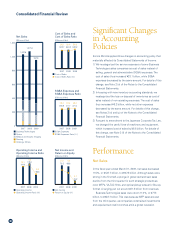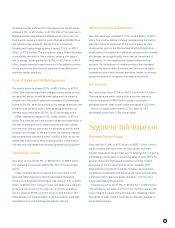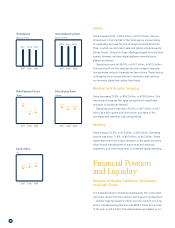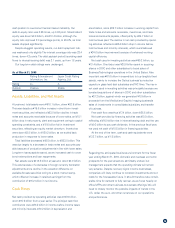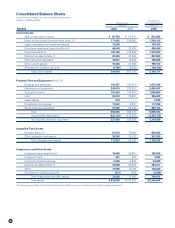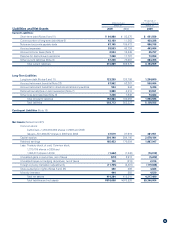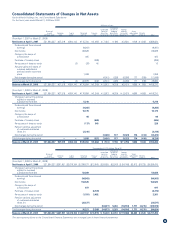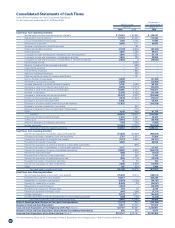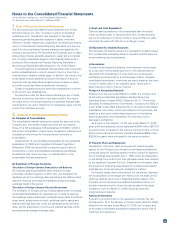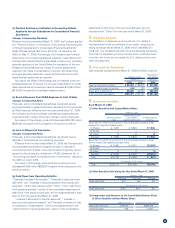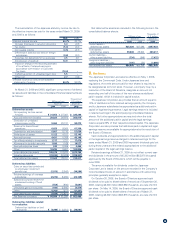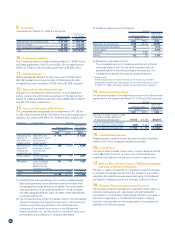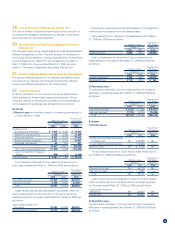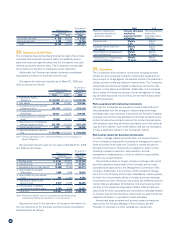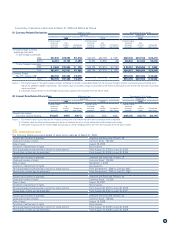Konica Minolta 2009 Annual Report Download - page 35
Download and view the complete annual report
Please find page 35 of the 2009 Konica Minolta annual report below. You can navigate through the pages in the report by either clicking on the pages listed below, or by using the keyword search tool below to find specific information within the annual report.
Notes to the Consolidated Financial Statements
Konica Minolta Holdings, Inc. and Consolidated Subsidiaries
For the fiscal years ended March 31, 2009 and 2008
33
1. Basis of Presenting Financial Statements
The accompanying consolidated financial statements of Konica
Minolta Holdings, Inc., (the “Company”) and its consolidated
subsidiaries (the “Companies”) are prepared on the basis of
accounting principles generally accepted in Japan, which are
different in certain respects as to application and disclosure require-
ments of International Financial Reporting Standards, and are com-
piled from the consolidated financial statements prepared by the
Company as required by the Securities and Exchange Law of Japan.
Accounting principles generally accepted in Japan allow consolida-
tion of foreign subsidiaries based on their financial statements in
conformity with International Financial Reporting Standards or
accounting principles generally accepted in the United States.
The accompanying consolidated financial statements incor porate
certain reclassifications in order to present them in a form that is
more familiar to readers outside Japan. In addition, the notes to the
consolidated financial statements include information that is not
required under generally accepted accounting principles in Japan,
but which is provided herein as additional information.
Certain comparative amounts have been reclassified to conform
to the current year classifications.
As permitted under the Securities and Exchange Law of Japan,
amounts of less than one million have been omitted. As a result,
the totals shown in the accompanying consolidated financial state-
ments (both in yen and in dollars) do not necessarily agree with the
sums of the individual amounts.
2. Summary of Significant Accounting Policies
(a) Principles of Consolidation
The consolidated financial statements include the accounts of the
Company and, with certain exceptions which are not material,
those of its 105 subsidiaries (108 subsidiaries for 2008) in which it
has control. All significant intercompany transactions, balances and
unrealized profits among the Companies are eliminated on
consolidation.
Investments in 6 unconsolidated subsidiaries (8 uncon solidated
subsidiaries for 2008) and 3 significant affiliates (3 significant
affiliates for 2008) are accounted for using the equity method.
Investments in other unconsolidated subsidiaries and affiliates
are stated at cost, since they have no material effect on the
consolidated financial statements.
(b) Translation of Foreign Currencies
Translation of Foreign Currency Transactions and Balances
All monetary assets and liabilities denominated in foreign
currencies, whether long-term or short-term, are translated into
Japanese yen at the exchange rates prevailing at the balance sheet
date and revenues and costs are translated using the average
exchange rates for the period.
Translation of Foreign Currency Financial Statements
The translation of foreign currency financial statements of overseas
consolidated subsidiaries into Japanese yen is made by applying
the exchange rates prevailing at the balance sheet dates for balance
sheet items, except common stock, additional paid-in capital and
retained earnings accounts, which are translated at the historical
rates, and the statements of income and retained earnings which
are translated at average exchange rates.
(c) Cash and Cash Equivalents
Cash and cash equivalents in the consolidated cash flow state-
ments comprises cash on hand and short-term investments that
are due for redemption in three months or less and that are easily
converted into cash with little risk to a change in value.
(d) Allowance for Doubtful Accounts
The allowance for doubtful accounts is provided for possible losses
from uncollectible receivables based on specific doubtful accounts
and considering historic experience.
(e) Inventories
Domestic consolidated subsidiaries’ inventories are mainly stated
by a cost price method (carrying amount in the balance sheet is
calculated with consideration of write-down due to decreased
profitability) as determined by a total average method. Overseas
consolidated subsidiaries’ inventories are mainly stated at the lower
of cost or market value or net realizable value, where cost is
determined by a first-in, first-out method.
Changes in Accounting Standards
Effective from the year ended March 31, 2009, the Company and
its domestic consolidated subsidiaries adopted Accounting
Standards Board of Japan (ASBJ) Statement No. 9, “Accounting
Standards for Measurement of Inventories”, issued by the ASBJ on
July 5, 2006. Under ASBJ Statement No. 9, domestic consolidated
subsidiaries’ inventories, which were stated at cost previously, are
stated by a cost price method (carrying amount in the balance
sheet is calculated with consideration of write-down due to
decreased profitability).
As a result of this adoption, for the year ended March 31, 2009,
gross profit and operating income decreased ¥3,644 million ($37,097
thousand) when compared to the previous method. Further, income
before income taxes and minority interests decreased ¥865 million
($8,806 thousand) when compared to the previous method.
(f) Property, Plant and Equipment
Depreciation of property, plant and equipment (excluding lease
assets) for the Company and domestic consolidated subsidiaries is
computed using the declining balance method, except for deprecia-
tion of buildings acquired after April 1, 1998, which are depreciated
on the straight line method over their estimated useful lives referred
by the Japanese Corporate Tax Law. Depreciation of property, plant
and equipment (exclusing lease assets) for overseas consolidated
subsidiaries is computed using the straight-line method.
For finance leases where ownership is not transferred, deprecia-
tion is calculated by the straight-line method over the lease period
utilizing a residual value of zero. Regarding finance leases of the
Company and its domestic consolidated subsidiaries that do not
transfer ownership and for which the starting date for the lease
transaction is prior to March 31, 2008, lease payments are
recognized as an expense.
Additional Information
Pursuant to an amendment to the Japanese Corporate Tax Law
(Ordinance No. 32 of the Ministry of Finance Japan (April 30, 2008)),
effective from the year ended March 31, 2009, the Company and
its domestic consolidated subsidiaries changed the useful lives of
machinery and equipment.



